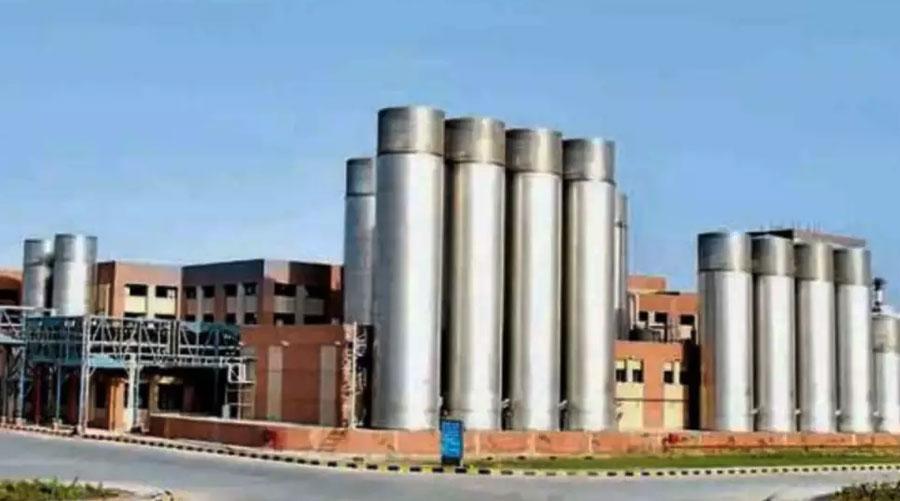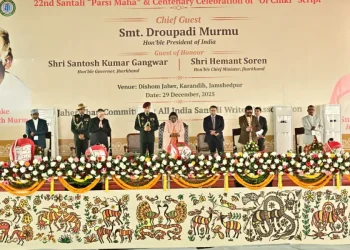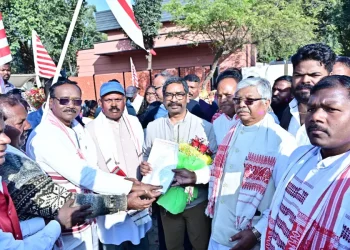Prime Minister Narendra Modi’s three-day visit to Gujarat, starting Monday, is being seen against the backdrop of the BJP’s bid to retain power in a State for the seventh straight time.
And tribals play a major role in the scheme of things. No wonder then that the Prime Minister will unveil a number of developmental projects in the tribal-dominated region. According to the BJP, the Adijati Maha Sammelan is expected to have two lakh tribals in attendance.
Modi will lay the foundation stone for manufacturing of 9000 HP Electric Locomotives at the Production Unit in Dahod. The Rs 20,000-crore project, established in 1926 for periodic overhaul of steam locomotives, will be upgraded to an electric locomotive manufacturing unit with infrastructure improvements.
The locomotive project is expected to provide direct and indirect employment to over 10,000 people, mostly from the tribal community. PM Modi will also launch some other schemes and projects worth Rs 22000 crore in the tribal areas of Dahod on the same day
Known for his long-term strategies, Modi had systematically started reaching out to the tribals in Gujarat ahead of the 2014 Lok Sabha polls. Tribals form almost 15 percent of the State’s total population. Their voting power directly affects as many as nine Lok Sabha seats out of the total 26 seats in Gujarat.
Before the 2014 Lok Sabha polls, it was the Congress which was having control over these tribal dominated seats. However, since 2014 all nine seats are with the ruling BJP.
Gujarat’s tribal belt, locally known as “Purvpatti” (Eastern Belt), is spread across three regions of the State right from Ambaji in the North to Godhra in Central Gujarat to Umbergaon in the South. South Gujarat comprises four important parliamentary constituencies — Dahod, Chhota Udepur, Bardoli and Valsad. Three of these, barring Chhota Udepur, were with the Congress before 2014 Lok Sabha polls
Apart from these four seats, tribal voters constitute a sizable proportion in as many as five other Lok Sabha constituencies, Sabarkantha, Banaskantha, Panchmahals, Bharuch and Navsari. Even before 2014, these Lok Sabha seats were already with the BJP.
Gujarat’s 400-km-long tribal belt also has considerable political significance in the neighbouring States of Rajasthan, Madhya Pradesh and Maharashtra.
In fact, during his three-day-long visit starting from Monday evening, Modi will also inaugurate the Rs 600-crore Greenfield plant of Banas dairy at Banaskantha district on Tuesday. He will inaugurate a potato processing plant too.
Of late, the BJP has renewed its tribal outreach. Modi has announced that tribal icon Birsa Munda’s birth anniversary on November 15 will be observed as Janjatiya Gaurav Diwas every year. Establishing museums of tribal freedom fighters, renaming railway stations after tribal leaders and installing statues of tribal icons area are also part of the BJP’s tribal push.
In Gujarat, besides taking up the development agenda, the BJP also raises conversion issues in the tribal areas, especially in Dang district where Christian missionaries as well as right wing organisations like RSS and VHP are highly active.
“Over the past couple of decades, BJP-ruled Gujarat has undertaken a plethora of projects for providing electricity, water connections, irrigation facilities and better roads under its VanBandhu Scheme. The saffron brigade is also focusing on Garib Kalyan Mela to woo tribal voters,” a political observer said.
The Gujarat Government’s initiatives on eco-tourism in the forest-rich tribal areas also helped the locals economically. The state’s only hill-station, Saputara in Dang district bordering Maharashtra, is being promoted by Bollywood icon Amitabh Bachchan. As a result, there was an increased tourists’ inflow that ended up with enhanced employment opportunities for members of the tribal communities, State government officials said.






















